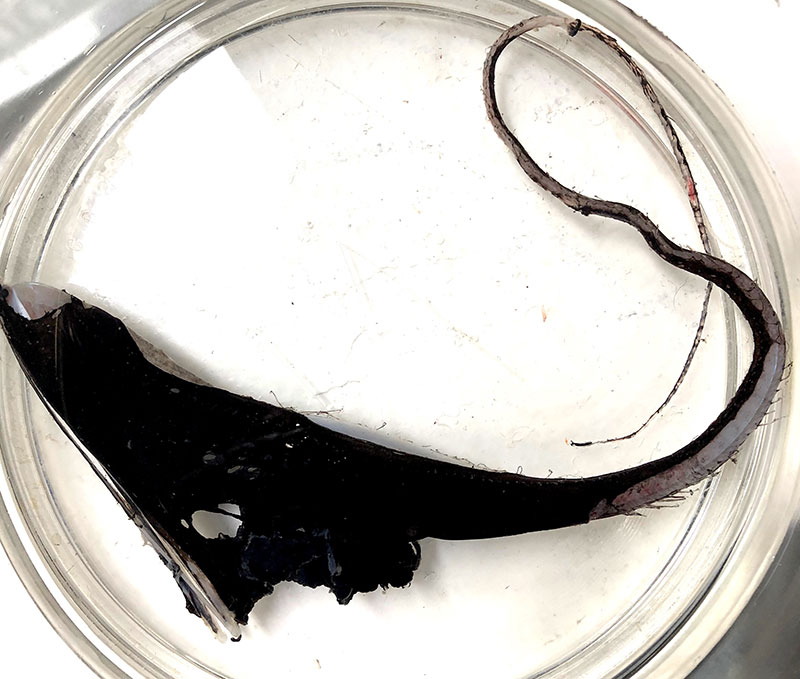
By Alexander Davis, Graduate Student – Duke University
June 18, 2019
“You can’t have a light without a dark to put it in” – Arlo Guthrie
In the midnight zone, sunlight is long extinguished and the only light comes in the form of bioluminescence from the animals that live there. Predators can take advantage of this fact and scan the water for glints of light reflected from the skin or scales of potential prey. In this game of life and death, how have animals evolved to minimize the amount of light they reflect and stay hidden? By being blacker than black.
Our goal is to understand this other half of light in the deep sea – “the dark to put it in.” While many fish in the deep-sea are dark brown or black, some have specialized skin that absorbs up to 99.96 percent of light, approaching the best human-made materials. By absorbing essentially all of the light that hits them, these fish render themselves invisible below 1,000 meters (3,280 feet). In the lab, outside of their natural lighting conditions, the fish look like holes in the universe or a mistake made in Photoshop.

A rare pelican eel (Eurypharynx pelecanoides) with ultra-black skin that accidentally hitched a ride on the outside of the trawl net. Despite its rough voyage to the surface, enough skin remained intact for us to take measurements. Image courtesy of Journey into Midnight: Light and Life Below the Twilight Zone. Download larger version (jpg, 2.2 MB).
When animals come up in the trawl net, we bring them into the improvised darkroom and use a light source and a spectrophotometer (a fancy photon counter) to measure how much light is reflected from their skin. When Sönke Johnsen first attempted to take similar measurements on a previous cruise, the fish were so black that the detector was reading at zero. It was only after reconfiguring the setup that we were able to get a measurement at all, and even then, the detector was picking up almost no light.
To our surprise, we have discovered a diversity of animals on this trip, from anglerfish to dragonfish, that display this mind-bendingly black color. Such incredible diversity across different groups of fishes suggests that what you put the light in may be just as important as where it comes from or how it is made.